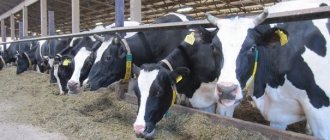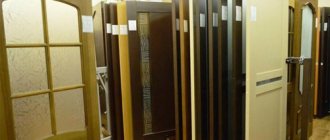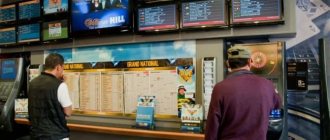- 1 Legal form and required documents to open a cafe
- 2 Stages of opening a cafe and collecting documents
- 3 Basic requirements for premises
- 4 What documents are needed to open a cafe?
- 5 Penalties for non-compliance with provisions provided for in the contract
- 6 What SES documents are needed for a cafe?
- 7 The importance of obtaining permission from the SES
- 8 Opening a cafe in a residential building
When planning to launch their own catering, novice businessmen ask themselves the main question: what documents are needed to open a cafe? You also need to choose the legal form of the business, taking into account the specifics of the work and the nuances of reporting, resolve the issue of compliance with sanitary standards and properly organize the process. It is important to understand: we are talking about a catering establishment where strict requirements for production processes and service apply. Violation of even one point will lead to inspections, fines and complete closure of the enterprise with revocation of the license. You need to prepare a complete package of documents for opening a cafe, obtain all the necessary permits and certificates, and also comply with established requirements throughout the entire operation.
Legal form and required documents for opening a cafe
The work of catering requires a certain form of management. The following options are possible:
- Individual entrepreneur or individual entrepreneur. The most affordable way to organize a business. You don’t have to collect a large package of documents to open a cafe - just an application (a sample is available on the Internet) and a passport for registration. You will also need to pay a state fee (800 rubles). As for the direct work of a public institution, an individual entrepreneur has the right to carry out various types of activities (cooking, service, delivery), hire workers and rent premises. At the same time, reduced interest rates on taxes apply. As for the disadvantages, these include the inability to attract partners. The best option for small establishments (cafes, bars, etc.);
- LLC, or limited liability company. Unlike an individual entrepreneur, it is a legal entity, which allows you to work together with partners with the division of capital into participation shares. It is easier for a company to find investors and participants, which reduces the costs of each member for organizing a business. What documents are required to open a cafe in this case? In addition to the application itself, an agreement between the board members and a receipt for payment of the fee are required. It is also necessary to form an authorized capital - at least 10,000 rubles (not in property). The LLC format is suitable for medium-sized businesses;
- JSC, or joint stock companies (closed or open). The peculiarities of this format are the nuances of the distribution of shares and shares between participants. It can be used to create a full-fledged network of cafes with division of responsibilities and work areas.
Stages of opening a cafe and collecting documents
Despite the importance of collecting documents for opening a coffee shop in 2020, the first step towards creating a business is developing a project that includes all stages of the organization.
The main stages are:
- concept creation. It determines the format of doing business, the idea of the establishment, the target audience, the location of the point, visual presentation, name and other elements of the brand. Logo development, interior design, menu, premises rental - all this is formed at the first stage. It is important to note that the concept directly affects the collection of papers to begin work. For example, if you are focused on seasonality, then you will be interested in what documents are needed to open a summer cafe with or without a site;
- development of a business plan. This includes all the nuances associated with expenses, searching for finance, choosing a form of doing business, forecasting income and profitability. In other words, the financial capabilities and potential of the project are determined;
- selection of premises. It is very important to decide in advance what kind of premises you need and how you will get it (your own facility, rent, etc.). The type of object will also affect the documentation collected. There is a difference between what documents are needed to open a cafe in a non-residential building and in a residential building. It is necessary to take into account a number of related factors, such as geographical location, number of floors, area, current condition (whether repairs are required), available communications and power, cost;
- development of a design project. At this stage, the technical and visual parts are worked out. A plan for the placement and connection of communications, room layout, choice of furniture, room decoration, zoning, etc. are determined. 3D visualization is very useful here, it helps to quickly get a finished project with the ability to make changes;
- obtaining documentation. After developing the concept and project, you can begin to obtain permits. This stage involves preparing the necessary documents for opening a cafe in 2019 for registering an individual entrepreneur or legal entity, renting premises, a license for public catering (for selling food, alcohol, etc.), obtaining a passport and a cash book along with a cash register. Permissions are also obtained from all necessary authorities (SES, BTI, etc.). Certificates and permits must be collected before starting work in order to avoid inspections and the introduction of penalties;
- menu development. Taking into account the theme of the bar, target audience, financial capabilities and concept, the menu and product range are being developed;
- advertising. To attract attention to the cafe and form a customer base, it is necessary to develop an advertising campaign. It can be carried out through various channels, including the Internet, outdoor advertising, media, print publications, etc.
Features of the location for opening a point in the park
First, study what parks are in your city and how realistic it is to open a point there. This depends on the following factors:
- who owns the park (is it municipal or private);
- what are the conditions for concluding an agreement to open a point;
- what points are already open in the park;
- how many visitors are in the park (calculate traffic on weekdays and weekends) and whether your target audience is among them.
Then research the parks that suit you. Pay attention to how visitors move around the park, which places are the most accessible. Count traffic at different points in the park and at different times
.
Open where there are more people or where your audience is concentrated. The right place for you may be close to the attractions, near a fountain with benches, a playground, or right at the entrance to the park. In the latter case, you can also attract passers-by from the street.
Basic requirements for premises
The future cafe can be located in a private building when a person purchased, built it himself or rented it. Any establishment must be equipped with cash registers and computers with fiscal memory. The size of the room must be at least 50 m2 for the city, and 25 m2 for rural areas. It is also necessary to provide space for a warehouse and the availability of constituent documentation. In accordance with SanPiN 2.3.6.1079, it is strictly prohibited:
- Place the kitchen in semi-basements and basements.
- Set up rooms for permanent and temporary residence, as well as keep animals in cafeterias.
- Deliver products from the front side of the house, or where apartment windows or entrance doors to the entrance are located.
In catering establishments, doors for receiving provisions should be located at the end of the building, where there are no apartment windows and a common entrance to the entrance. Zones in such establishments should have an orderly arrangement taking into account the technological process:
- territory for acceptance and placement of products;
- area where the food preparation process takes place;
- shopping area and reception hall;
- administration area;
- sanitary facilities.
Crossing all zones is prohibited. Fresh food and garbage, clean and dirty dishes must be strictly separated. All areas and corridors in the establishment should be compactly located so that in case of emergency, clients and employees can freely leave the building. Finishing materials for interior wall cladding should be easy to wash and have high resistance to chemicals and disinfectants. In addition, the finish should be low flammability. All materials used for finishing work must have quality certificates and meet the requirements of the State Standard of the Russian Federation. In case of evacuation, separate exits should be provided for employees and customers. Evacuation passages must be clear.
The floor in the production area must be waterproof, have no protrusions, be resistant to mechanical damage, non-slip and easy to wash. The walls should be painted in light shades or tiled at a height of 1.8 meters from the floor. The ceiling and walls of the warehouse can be painted white. The establishment must be well ventilated. In a cafe for 100 people or more, it is recommended to install an air handling unit. The establishment must be fully heated, but each zone has a different temperature:
- trading floor – 16-18°C;
- procurement shops – 16°C;
- washing – 18°C.
You cannot locate a storage room under a bathroom. The dining area should be equipped with artificial or natural lighting. A catering establishment must be divided into the following zones:
- Rooms for storage. This includes rooms with refrigerators and areas for storing vegetables, fruit and berry products, flour products and cereals.
- Production area. This includes meat, fish, confectionery and cold shops. In the room where animal products are cut and processed, as well as in the confectionery shop, special bactericidal lamps must be installed.
- Room for storing finished products. Refrigeration equipment and special shelving must be installed here.
- Guest area (bar counter, dressing room, sanitary unit, trading area).
- Area for administration and cafeteria workers.
- Room for storing cleaning supplies and household chemicals.
The size of all zones depends on the overall size of the restaurant. According to the standards, one seat requires 1.6 square meters of free space. The SES requirements for cafes and restaurants are set out in SanPin 2.3.6.1079-01.
Classification of catering establishments, general requirements
Definitions.
Catering enterprise is an enterprise intended for the production of culinary products, flour confectionery and bakery products, their sale and (or) organization of consumption (GOST R 50647).
The type of public catering establishment is a type of enterprise with characteristic features of service, the range of culinary products sold and the range of services provided to consumers.
The class of a public catering establishment is a set of distinctive features of an enterprise of a certain type, characterizing the quality of the services provided, the level and conditions of service.
The catering service is the result of the activities of enterprises and citizen entrepreneurs to meet the consumer’s needs for nutrition and leisure (GOST R 50764-95).
The cafe catering service is a service for the production and sale of culinary products and purchased goods in a limited range compared to other types of enterprises and mostly simple production, as well as for creating conditions for their consumption at the enterprise.
The food service of a snack bar is a service for the production of a narrow range of culinary products, including from a certain type of raw material, as well as the creation of conditions for its sale and consumption.
2. Classification of enterprises.
Catering establishments are classified:
- according to the degree of centralization of production (with a complete production cycle - working on raw materials, on semi-finished products, procurement and without production - dispensing);
- according to the nature of the population served (with a changing contingent - public, with a permanent contingent - catering units at schools, factories, etc.);
- on the basis of specialization (complex, general type, specialized in the production of certain types of products);
- by service method (waiter service, self-service);
- by markup category and level of service (luxury - restaurants; highest - restaurants, cafes, bars; first - restaurants, cafes, specialized enterprises; second - public canteens, cafes, specialized enterprises, buffets; third - canteens and buffets serving workers, employees , students and pupils).
Depending on the time of operation, public catering establishments can be permanent or seasonal.
Enterprises are also divided into stationary and mobile.
In accordance with GOST 50762-95 “Public catering. Classification of Enterprises" within the food industry, the following types of enterprises are identified: restaurant, bar, cafe, canteen, snack bar. Among these types, highly specialized quick service enterprises have gained great popularity in recent years.
Next, only two types of enterprises will be examined in detail - a cafe and a snack bar, as well as mixed-type enterprises for organizing a donut shop.
Characteristics of enterprises.
A cafe is a widespread type of catering establishment, differing from restaurants primarily in the range of products sold and, as a consequence, in organizational and design features.
Cafes are distinguished:
- by the range of products sold - ice cream parlor, confectionery cafe, dairy cafe, donut cafe;
- by consumer group – youth cafes, children’s cafes, etc.
The menu of a donut cafe can include a wide range of drinks (hot and cold), flour products - donuts, flour confectionery, desserts, as well as cold appetizers and main hot courses. Cold and hot appetizers and main hot courses are, as a rule, simple to prepare, and various semi-finished products are most often used for their production.
Cafes, like restaurants, combine the production, sale and organization of consumption of products with the organization of recreation. The range of services provided by the café can consist of the following list:
- production of culinary products and confectionery products according to consumer orders;
- organization and service of celebrations (children's birthdays);
- sale of culinary products and confectionery products through the store and culinary departments;
- sale of culinary products outside the enterprise.
The limited range of manufactured and sold products, as well as the simplicity of their manufacture, also determine more limited requirements for the architectural and planning solutions of the enterprise and its design. So, a regular sign is allowed - without lighting. The design of halls and premises for consumers should create only a unity of style, and the microclimate should be ensured by a ventilation system that creates acceptable temperature and humidity parameters.
Mandatory premises for cafe consumers include: a lobby, a cloakroom, a hall, a toilet with a hand-washing area.
The size of the area for consumers in a cafe is regulated only for the hall and must be at least 1.6 m per seat.
The size of the hall is directly related to the form of service - waiters or self-service. When serving by waiters, the size of the halls should include large areas, since it is necessary to install equipment tables and have free passages for serving carts.
A cafe, unlike a snack bar, combines the production, sale and organization of consumption of products with the organization of recreation and entertainment for consumers.
Snack bar is a public catering establishment with a limited range of uncomplicated dishes made from a certain type of raw material or semi-finished products, designed to quickly serve consumers.
Based on the range of products sold, snack bars are divided into two categories: general type and specialized. The network of specialized eateries is quite wide and includes sausage, dumpling, pancake, pie, donut, kebab, tea, and pizzeria shops. The specialization of the enterprise is directly related to the predominance of one of the dishes in the assortment, as well as accompanying hot and cold snacks, sandwiches, confectionery and a variety of cold and hot drinks.
Most eateries are classified as fast food establishments, which operate a self-service system with a free choice of dishes. To reduce the area of the trading floor and increase throughput, high tables are installed here, at which consumers can eat while standing.
Remote trading on special sites adjacent directly to the enterprise is considered rational. Such work is organized in spring and autumn in recreation areas. At the sites, tables, chairs and special umbrellas are installed over each table or an awning over the site.
In large modern supermarkets, a wide network of cafeterias is organized, the products of which are close to snack bars: sandwiches, sausages, pizza, pastries, hot and cold drinks. One or two work stations are organized in the cafeteria and equipped with microwave ovens, coffee makers, juice cooling devices, and refrigerators. Products, as a rule, are sold in disposable containers, which does not require washing dishes and significantly reduces the space occupied by the enterprise.
Requirements for architectural and planning solutions for eateries include the presence of a sign with a conventional design and a ventilation system that ensures acceptable temperature and humidity parameters.
The composition of premises for consumers is regulated only by the presence of a hall, the area of which must be organized at the rate of 1.8 m2 per place with distribution.
Cafes and snack bars, unlike restaurants and bars, which are divided into three classes, are not divided into classes.
Mixed food establishment . Within cafes and snack bars, it is also possible to design two sales areas with separate entrances. In each of them they sell a certain type of product, for example, a café-pastry shop - a café-pastry shop, a café-pancake shop - a café-pie shop, a kebab shop - a dumpling shop, etc.
This organization of work makes it possible to divide the flow of consumers of a certain type of product and thus increase the throughput of the enterprise as a whole.
As can be seen from the example above, the combination of a cafe and a snack bar is based on the production and sale of culinary products that are similar in preparation technology and have the same products based on recipes, such as milk, flour, eggs, flour products, flour confectionery, etc.
4. General requirements for public catering establishments.
Public catering establishments must comply with the requirements of regulatory documents on the safety of services:
- sanitary, hygienic and technological requirements SanPiN 42-123-5777, SanPiN 42-123-4117, collections of recipes for dishes and culinary products;
- requirements for the safety of food raw materials and products - in accordance with the requirements of ILO 5061;
- environmental safety - SanPiN 42-123-5777, SNiP 2.08.02;
- electrical safety - SNiP 11-4.
The architectural and planning solution and structural elements of the building, the technical equipment used must comply with SNiP 2.08.02.
Enterprises of all types and classes must be equipped with water supply systems (drinking, fire and hot), sewerage, ventilation, heating, electric lighting, and telephone networks.
In accordance with the design assignment, buildings or groups of premises of catering establishments can be additionally equipped with: air conditioning devices, internal telephone communications, sound and speech amplification installations, alarm and hazard warning installations, automation and dispatch systems for engineering equipment, as well as gas supply and waste disposal systems and dust collection.
The design of these systems should be carried out taking into account the requirements of the relevant regulatory documents in construction in force in the given territory.
The placement of production premises and equipment in them must ensure the consistency of the technological process of production and sale of products, as well as compliance with technological, sanitary standards and rules.
Raw materials and food products used for the production of culinary products, as well as the conditions for their production, storage, sale and organization of consumption must meet the requirements of the relevant regulatory and technical documentation (Collections of recipes for dishes and culinary products, SanPiN standards 42-123-5777-91 and 42 -123-4117-86), as well as sanitary-hygienic, microbiological and medical-biological indicators approved by the Ministry of Health and Medical Industry of Russia.
The service conditions for the provision of services must comply with the requirements of the current regulatory documentation on the level of noise, vibration, illumination, microclimate conditions - the requirements of SanPiN 42-123-5777-91, architectural, planning and design solutions, electrical, fire and explosion safety indicators - the requirements of SNiP 2.08.02-89.
Trade and technological and refrigeration equipment, dishes, instruments and equipment, other items of material and technical equipment must be made of materials approved by the Ministry of Health and Medical Industry of Russia for contact with food products, and meet the requirements of SanPiN 42-123-5777-91, operational documentation of factories - manufacturers and standards of technical equipment of public catering establishments.
Production and service personnel must have appropriate special training and ensure compliance with sanitary requirements and personal hygiene rules during the production, storage, sale and organization of consumption of culinary products.
Requirements for the ventilation system.
The ventilation system in built-in, built-in and attached food establishments to buildings for various purposes must be designed separately from the systems of these buildings; it is possible to connect them to the control units of these buildings.
Food establishments built-in or built-in-attached to residential buildings must be equipped with a separate ventilation system with exhaust above the ridge of the residential building.
Exhaust ventilation systems must be designed independently for the following premises:
- premises for consumers (except for restrooms and washrooms);
- hot shops and washrooms;
- production (with the exception of hot shops and washing rooms), warehouses (with the exception of refrigerated chambers: for storing vegetables and fruits, meat and fish, food waste) and administrative premises;
- latrines, washrooms and showers;
- refrigerated chambers for storing vegetables and fruits, meat and fish;
- refrigerated chambers for storing food waste.
In catering establishments with 50 or fewer seats, the supply ventilation of the dining room and hot shop can be designed as a single system.
When a catering facility is equipped with a ventilation system, the capacity of the ventilation hood above the catering equipment must be at least 300 m3/hour if the ventilation goes directly to the street, and at least 700 m3/hour if the ventilation system is connected to the building system.
5. Requirements for cafes and snack bars.
Requirements for cafes and snack bars are divided into the following areas:
Requirements for architectural and planning solutions and design of enterprises.
| Type of enterprise | Requirements for enterprises |
| Cafe |
|
| Snack bar |
Requirements for furniture, tableware, cutlery, linen.
| Type of enterprise | Requirements for enterprises |
| Cafe |
|
| Snack bar |
|
Requirements for the design of menus and price lists, assortment of culinary products for enterprises of various types and classes.
| Type of enterprise | Requirements for enterprises |
| Cafe |
|
| Snack bar |
|
Requirements for methods of customer service, branded clothing, shoes, music service for cafes and snack bars.
| Type of enterprise | Requirements for enterprises |
| Cafe |
|
| Snack bar |
Composition of premises for consumers in cafes and snack bars.
| Type of enterprise | Requirements for consumers | Area per place, not less |
| Cafe | Lobby Wardrobe Hall | 1,6 |
| Snack bar | Hall | 1,8 |
What documents are needed to open a cafe?
Legal and full-fledged catering activities are possible only if all necessary licenses and permits have been obtained, the enterprise is registered with the relevant services and all stages of preparation have been completed.
Permits for opening a cafe are a whole package of documentation, which includes:
- approval from fire safety authorities. An appropriate inspection is carried out and a decision is made that the public institution complies with the standards and can be used;
- permission from Rospotrebnadzor. Provides the possibility of opening a bar in the selected location;
- permission from the SES. Upon request, a sanitary team is sent to the site to conduct a full analysis of the premises to ensure compliance with sanitary requirements and standards. Also, during the work, SES specialists check the relevant documents necessary for opening a cafe (documentation on the food resources and equipment used, medical books of working personnel, etc.);
- floor plan;
- contract for waste removal and disposal.
You, as the future owner of the establishment, need to obtain certain permits. Their list depends on what types of services you provide and what products you sell. It is mandatory to obtain a retail trade license. If the cafe will serve tobacco or alcohol products, you will additionally need to obtain the appropriate permit. Moreover, in this case, the necessary documents for opening a cafe may be different. For example, a license only for sale without consumption on the territory of the establishment or a permit with the possibility of drinking in a cafe.
When receiving papers, it is important to take into account the form of business. So, individual entrepreneurs additionally need to obtain a trade patent.
Juristic documents
First you need to conclude a lease agreement or prepare a purchase and sale (donation) agreement. And register the business. What documents are needed for the process of registering a cafe with the tax authorities, we will tell you in the section “Accounting documents”.
Most often, novice entrepreneurs start work in rented premises. You will need a lease agreement for a building for a cafe at the very first stage of registering a business to register it and obtain a set of permits and approvals.
The lease agreement establishes the boundaries of responsibility, rights and obligations for the owner of the premises and tenants, fixes the rental price and stipulates the conditions for changing it or terminating the agreement.
At the first stage of preparation for opening a cafe, you will need:
- Several conclusions from Rospotrebnadzor: for the premises (issued after an examination of the area) and for the products (issued after laboratory tests).
- Permission from the State Inspectorate.
- Permits and approvals from the local administration (architectural department).
- Coordination with the traffic police (if you want to provide a small parking lot for cafe customers).
- Licenses and patents. These are documents for licensed products (for example, alcohol, if you plan to serve it), a permit for retail trade, a patent for trade.
When choosing a room for future coffee, make sure that you can bring it into compliance with sanitary and fire safety standards. It is easier to open a cafe in a room that has already been used as a catering establishment. And even in this case, during repairs and refurbishment, make sure that the materials comply with SES and fire department standards and have certificates.
Basic package
These documents will be required for all services. Therefore, immediately take care of having several copies:
- Title documents for the premises (lease/purchase/donation agreement).
- Legal documents for the cafe as a business (Charter, passports of the owners of the cafe, minutes of the meeting of the founders, TIN for the entrepreneur, etc.).
- A document confirming the state registration of the cafe as a business (Certificate).
It is better to clarify the complete set of documents in each service for which you are collecting it.
Additional legal documents
| For SES/Rospotrebnadzor | For State Fire Supervision | For the architectural department |
| Application to the local department of Rospotrebnadzor | Report to your local fire department | Documents from the cadastral service and BTI with explanations |
| Diplomas and other qualifications | Floor plan from BTI with explication (explanations) | Application for outdoor advertising. And for certain regions, in order to carry out repair work related to the facade of the building and the placement of a sign, a separate application is required. |
| Extract from the Unified State Register of Legal Entities (for the Company) or Unified State Register of Individual Entrepreneurs (for the entrepreneur) | ||
| Employee medical examination results | Documents confirming that personnel have completed fire safety training | |
| Certificates on checking ventilation for fire safety compliance of the system | A letter of guarantee from the owner of the building confirming that you have made changes to the appearance of the façade of his property and the placement of advertising. | |
| Conclusion on the safety of cafe products | Guide to PPB (specifically for your cafe) | |
| Acts on measuring readings in the electrical network | ||
| Conclusion on the safety of the raw materials used (expertise attached) | Agreements with organizations certified for installation and maintenance of fire and smoke warning systems, for work with ventilation, lightning protection, etc. |
Obtain an updated list of documents from the local departments of the structures that control the work of cafes.
Necessary agreements
To open a cafe, the owner needs to conclude three sets of contracts.
- With suppliers.
- With cafe service enterprises.
- With sanitary, disinfection services and enterprises licensed to work with cafe equipment, fire and security alarms.
| Treaties | ||
| To supply | For disposal and cleaning | For sanitary-epidemiological, security and fire-fighting measures |
| Raw materials | For collection and removal of solid waste | For installation and service of a panic button |
| For collection and removal of food scraps | For installation and service of a fire protection system | |
| For recycling of mercury lamps | For installation and service of the cash register | |
| For installation and service of the ventilation system | ||
| Semi-finished products | For washing staff clothes | Disinfection, deratization, disinsection |
| For periodic laboratory tests of prepared dishes | ||
| Finished products (if you plan to sell goods from other enterprises). For example, bread, buns, pastries, cakes, drinks | For the supply of electricity, gas, water, heating | For periodic laboratory tests of raw materials and purchased semi-finished products |
| For periodic laboratory tests of purchased finished products | ||
| For drainage | For periodic measurements of temperature and humidity, as well as light levels in the workshop and warehouse (if you prepare dishes and have storage facilities) | |
| For installation and maintenance of refrigeration and heating equipment (showcases, refrigerators, ovens, washing equipment) | For periodic medical examination of cafe employees (all cafe employees must have health records with up-to-date health records) | |
Contracts are concluded at the stage of preparing a cafe for opening and are extended throughout its existence.
Documents for commissioning a cafe
To put the cafe into operation, you need to have on hand on the opening day:
- The main package of documents (it is described in the paragraph of the same name in this article).
- Documents confirming the company's registration with the Federal Tax Service.
- Bank details (registration account, k, s, BIC, INN), if the cafe is open as an LLC.
- Copies of agreements with utility providers.
- Copies of contracts with sanitary services and cafe service companies.
- Certificates for air conditioners and ventilation system equipment.
- Sanitary passport for a cafe.
- Approved project for a catering facility with explanations.
- Certificates for materials used in repairs.
- Certificates for products and a list of ready-made dishes with prices.
- Sanitary passport for vehicles transporting raw materials, semi-finished and finished products (if the car belongs to a cafe or entrepreneur).
- Acts of tank research of wastewater, drinking water, ventilation system.
- Consumer Corner (read what you need for this stand in the “Other Documents” paragraph).
- A production control program (PPC) agreed with the sanitary services.
The list of documents is variable and can be expanded as necessary.
Penalties for non-compliance with provisions provided for in the contract
Public catering is the area of organizing the provision of culinary products to people. This industry is most often checked by specialized services, as it is closely related to the safety of human health and life, as well as the external environment. The penalty for failure to comply with legal norms is a fine, the amount of which depends on the severity of the offense. For example, the inspector may require the establishment to be closed for several days to fix the problem or require monetary payment. All actions of a government representative are documented within the framework of the law. The amounts of monetary recovery are as follows:
- a private entrepreneur faces a fine of 4,000-8,000 rubles;
- for legal entities persons – 100,000-200,000 rubles;
- for authorized persons – 5000-10000 rubles.
Common violations that entail legal proceedings are such things as non-compliance with sanitary standards and general provisions according to the documentation, violation of fire safety regulations and much more. In the event of catastrophic consequences, such as poisoning resulting in death, multiple poisonings, epidemiological situations, criminal proceedings may be initiated. Often such stories end with serving a prison sentence.
What SES documents are needed for a cafe?
Since we are talking about bars and cafes, catering establishments, it is necessary to strictly comply with the standards of the sanitary and epidemiological service. For this reason, the opening of catering requires that a businessman must have ready-made sanitary regulatory documents for opening a cafe. These include:
- certificate from the BTI;
- contract for cleaning and disinfection of the ventilation system;
- agreement on rent or purchase of premises;
- contract for deratization, disinfestation;
- permission to commission from the SES;
- positive decision of the fire inspectorate;
- log book of work on sanitary and epidemiological measures;
- sanitary passport of the facility;
- sanitary passport of the transport used by the cafe;
- a completed agreement with a waste removal company;
- medical records of all working personnel.
After the documents necessary to open a fast food cafe have been completed, you need to send a notification to Rospotrebnadzor that the establishment is starting commercial activities and has received all the required permits.
Features of summer cafes
The process of opening a summer cafe involves not only knowledge of the legal intricacies of doing business. Fire safety standards, compliance with sanitation and hygiene requirements are mandatory. To open a street-type catering establishment, even a project (sketch) will have to be approved by the supervisory authorities and the city administration. But, despite all the difficulties and seasonality of such a business, it brings good profits and may be of interest to those owners who are not yet ready to launch a “stationary” project.
On average, a minimum of time is spent on opening a temporary catering outlet - from two to three months. An entrepreneur does not need to obtain a license for alcohol with an alcohol content of less than 6%. That is why the bulk of such establishments are beer tents and pavilions, where opening costs are minimal, and profitability with proper business development is maximum.
Review: My partner and I opened the first establishment of the chain in Moscow. Before this, we only had cafes in the Moscow region, where they were simpler. But having learned from bitter experience, we decided to immediately find a sanitary and epidemiological station that was ready to work with us seriously and for a long time. On the recommendation of friends, we contacted your SES. The first impression is positive.
How to get help right now?
When planning to open your own restaurant business, you should not rely solely on the strength of your employees or partners. Considering the fact that in any case you will have to enter into an agreement with the SES, it is worth finding an organization that has all the necessary licenses and is ready to:
- provide the necessary consulting assistance in collecting the full package of papers;
- ensure timely fulfillment of all undertaken obligations;
- guarantee the maintenance of log books, carrying out sanitary treatments according to the developed schedule;
- provide practical assistance on all issues that arise.
The importance of obtaining permission from the SES
Obtaining documents from the SES is a complex process and requires an integrated approach. It is important to note that there are no alternative ways of obtaining documents and permits (for example, purchasing). Even if you manage to acquire the documentation, the very first inspection will cast doubt on the validity of the license and limit your activities with a fine.
If you plan to work in the market for a long time, go through the procedure honestly. The entire collection and confirmation process takes about 30–40 days. To significantly reduce the time, we recommend entrusting the procedure to qualified specialists. This is especially true in situations where the cafe is completely ready to open, but there are not enough SES documents to start.
Selecting a room
Before opening an establishment, it is necessary to conduct research and select a promising location for a diner. For a good start, high traffic flow is important. In this area, you should not lose sight of your competitors, because you can always be one step ahead. You need to analyze the menu of such establishments and find out the preferences of their visitors. High-quality service and mouth-watering dishes will certainly attract a lot of customers. Delicious food is a guarantee of success. Before opening a diner, you should decide on the menu. To compile it, you need to select dishes that can be prepared quickly and tasty. At the start of your business, you can start activities in a store, a large office center, near universities and bus stations.
Opening a cafe in a residential building
In business practice, there are often cases when objects on the first floors of residential complexes are chosen as premises for opening a cafe. In such a situation, it is necessary not only to obtain the consent of the residents and comply with certain noise level standards, but also to draw up the appropriate papers:
- certificate of registration (LLC or individual entrepreneur);
- an application on behalf of the business owner in which he wants to obtain permission to open a cafe on the ground floor of the house;
- permission from the district or district administration;
- complete project for the facility;
- certificate from the BTI;
- permitting documentation from the Ministry of Emergency Situations and SES;
- approval from Rospotrebnadzor.
These are the documents required to open a cafe in a residential building.
Once you have collected and submitted your complete package, you will receive a response within 30 business days. Article written by: Expert Kokotkin Roman Davydovich Date of publication: 02/07/2020











